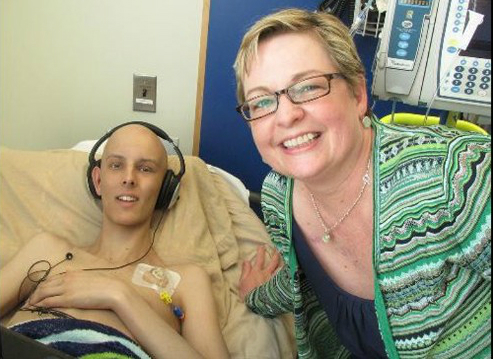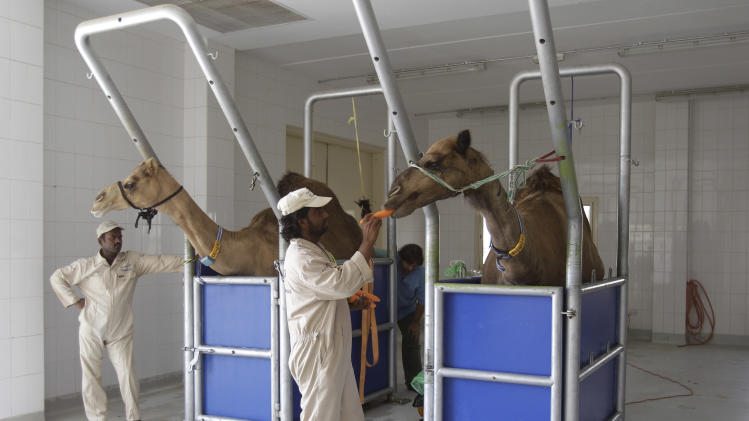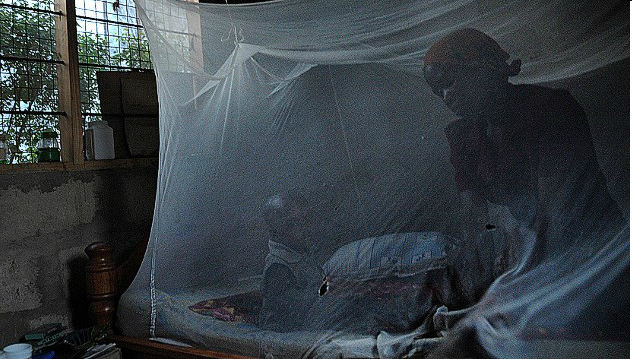
Scientsts have successfully revived a 30,000 year old giant virus frozen in ice. They say the virus is a type never before seen – and warn that global warming could lead to more being uncovered.
The researchers say the find could reveal viruses are far more diverse than previously thought – and warn the ancient viruses could affect humans.
The authors of the new paper, a mix of French and Russian researchers, identified the virus by taking a culture of amoebas found in the permafrost, and adding some of the permafrost.
Dubbed Pithovirus sibericum, the virus was found i
n a 30-metre (98-foot) -deep sample of permanently frozen soil taken from coastal tundra in Chukotka, near the East Siberia Sea, where the average annual temperature is minus 13.4 degrees Celsius (7.8 degrees Fahrenheit).
The team thawed the virus and watched it replicate in a culture in a petri dish, where it infected a simple single-cell organism called an amoeba.
Radiocarbon dating of the soil sample found that vegetation grew there more than 30,000 years ago, a time when mammoths and Neanderthals walked the Earth, according to a paper published in the US journal Proceedings of the National Academy of Sciences (PNAS).

They found the cells exploded, and when examined under a microscope, showed the presence of a giant virus particle known as a pandovirus.
‘While initiating a survey of the Siberian permafrost, we isolated a third type of giant virus combining the Pandoravirus morphology with a gene content more similar to that of icosahedral DNA viruses,’ the team wrote.
P. sibericum is, on the scale of viruses, a giant — it has 500 genes, whereas the influenza virus has only eight.
It is the first in a new category of viral whoppers, a family known as Megaviridae, for which two other categories already exist.
The virus gets its name from “pithos,” the ancient Greek word for a jar, as it comes in an amphora shape.
It is so big (1.5 millionths of a metre) that it can be seen through an optical microscope, rather than the more powerful electron microscope.
Unlike the flu virus, though, P. sibericum is harmless to humans and animals, for it only infects a type of amoeba called Acanthamoeba, the researchers said.
The work shows that viruses can survive being locked up in the permafrost for extremely long periods, France’s National Centre for Scientific Research (CNRS) said in a press statement.
‘It has important implications for public-health risks in connection with exploiting mineral or energy resources in Arctic Circle regions that are becoming more and more accessible through global warming,’ it said.
‘The revival of viruses that are considered to have been eradicated, such as the smallpox virus, whose replication process is similar to that of Pithovirus, is no longer limited to science fiction. ‘The risk that this scenario could happen in real life has to be viewed realistically.’
They believe the finding could mean there are far more diverse types of virus than previously thought.
‘This suggests that pandoravirus-like particles may correspond to an unexplored diversity of unconventional DNA virus families.’
The virus was was found frozen in ice close to the East Siberian Sea. The team say the find was unusual because fo the size of the virus. ‘Giant DNA viruses are visible under a light microscope and their genomes encode more proteins than some bacteria or intracellular parasitic eukaryotes.’
They want that global warming could lead to potential health threats.
‘The revival of such an ancestral amoeba-infecting virus used as a safe indicator of the possible presence of pathogenic DNA viruses, suggests that the thawing of permafrost either from global warming or industrial exploitation of circumpolar regions might not be exempt from future threats to human or animal health.’
Source: Daily Mail





 A major study has found that giving patients medications to lower their blood pressure during the first 48 hours after a stroke does not reduce the likelihood of death or major disability.
A major study has found that giving patients medications to lower their blood pressure during the first 48 hours after a stroke does not reduce the likelihood of death or major disability.


